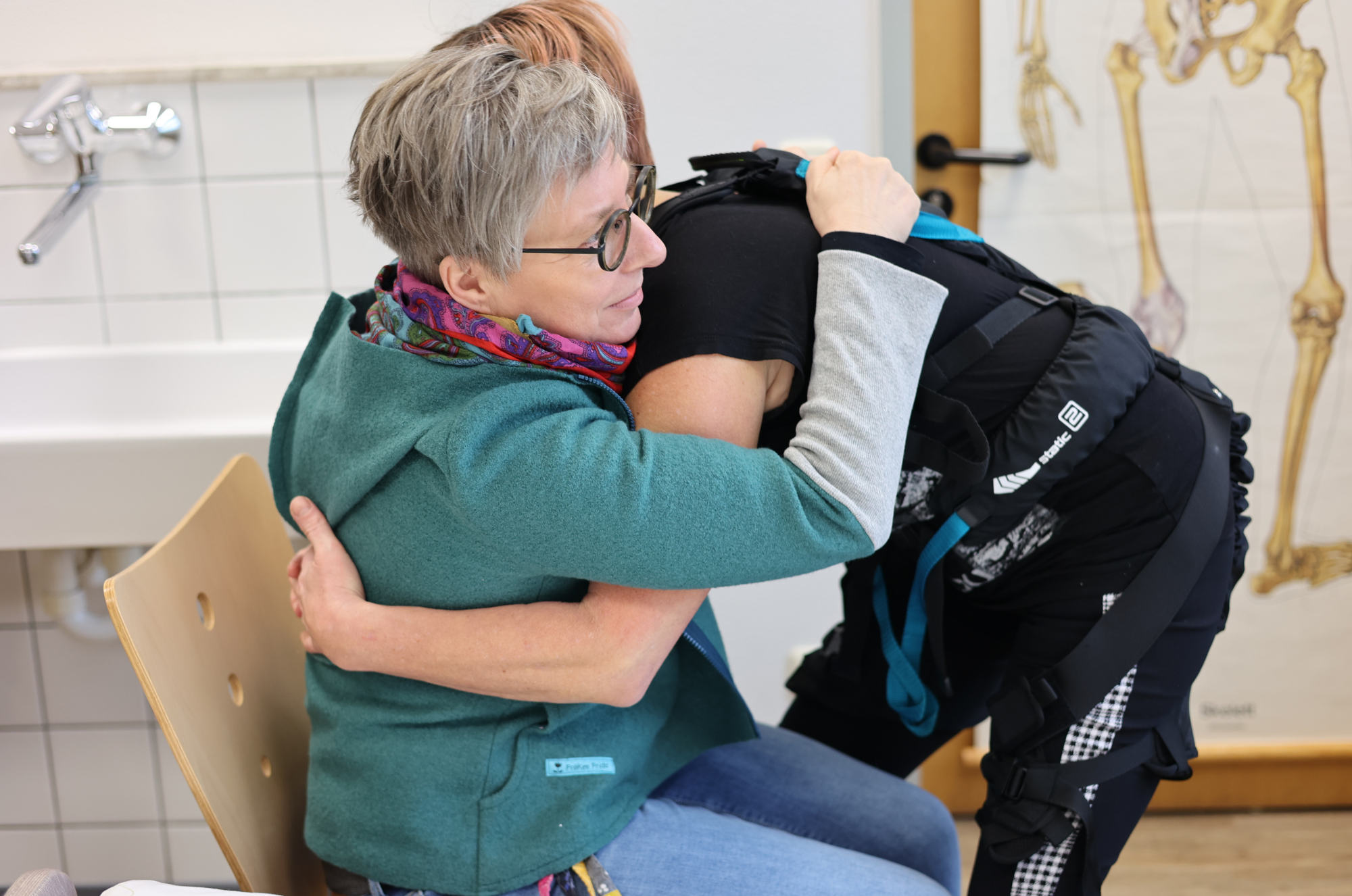Exoskeletons are emerging as a promising solution to support Europe’s healthcare workforce. Working with the EU-funded MSD-CARE project, Bax developed a sustainability roadmap and translated research results into practical outputs for healthcare teams and industry partners. These tools and insights demonstrate how wearable supports could protect staff, reduce strain and injuries, and help future-proof healthcare.
Nurses across Europe face a growing challenge: musculoskeletal disorders (MSDs) caused by the physical demands of lifting, bending, and supporting patients. These injuries are a leading cause of staff shortages and early retirement in hospitals and care facilities.
According to the OECD (2024), 15 EU countries reported a shortage of nurses in 2022 and 2023, driven by the dual challenge of an ageing population—raising the demand for health services—and an ageing health workforce. One in four nurses in the EU is aged over 55, and many are expected to retire in the coming years. For those who suffer MSD-related injuries, early retirement often comes with reduced income and emotional distress, forcing dedicated professionals to leave a vocation they value and deepening the staffing crisis in health and care services.
With demand for healthcare steadily rising, protecting and retaining staff has never been more urgent. Exoskeletons—wearable devices already used in logistics, agriculture, and manufacturing—are now showing great potential in healthcare. By reducing strain and supporting safer posture, they not only help nurses, but also other healthcare professionals and carers work more sustainably.
From pilots to practical solutions
Recent focus groups conducted at HAWK University of Applied Sciences and Arts Hildesheim in Germany, together with partners from Roessingh Research and Development (Netherlands) and the University of Galway (Ireland), suggested that exoskeletons can significantly ease the burden on healthcare staff. Nurses reported feeling supported in their lower backs and noticed improved posture during everyday tasks such as repositioning patients.
But the pilots also revealed practical hurdles that need to be addressed if exoskeletons are to reach the healthcare market:
- Cleaning and hygiene standards in clinical settings
- Comfort and fit across different body types
- Staff and patient perceptions of the devices
Turning evidence into action
This is where Bax stepped in. Working closely with HAWK University, Roessingh Research and Development, and the University of Galway, we translated pilot findings into resources to support the informed adoption of exoskeletons in the healthcare sector. Our collaboration delivered:
- A sustainability roadmap outlining the key trends in the field, opportunities for exoskeletons, and areas of action needed to advance their use.
- An Exoskeleton Adoption Protocol to help healthcare teams assess whether exoskeletons could fit their needs and which features to prioritise. The protocol builds on a 2020 discussion paper from the European Agency for Safety and Health at Work (EU-OSHA), which outlined key characteristics defining exoskeleton use. To tailor the tool for the healthcare sector, the MSD-CARE partners expanded it with additional guidance on factors to consider when selecting the most suitable exoskeleton.
- Action points for industry (in the form of an infographic), highlighting design priorities that would make exoskeletons more practical, comfortable, and acceptable in care environments.
By bridging research, industry, and healthcare providers, Bax helped ensure these innovations are carefully considered for the frontline, where they could make a significant difference.
Why it matters
For healthcare, exoskeletons are more than a technological innovation; they are a practical solution to one of the sector’s most pressing workforce challenges. By reducing preventable musculoskeletal injuries, improving posture, and lessening fatigue, these devices could help extend the careers of nurses, easing pressure on overstretched teams, and improving continuity of care for patients. In hospitals and care facilities where staff shortages are already critical, even modest reductions in injury rates can translate into significant improvements in staff retention, job satisfaction, and overall well-being.
For industry, healthcare represents an emerging and largely untapped market. MSD-CARE provides a clear blueprint for what frontline staff need: hygienic, comfortable, practical designs that are acceptable to patients. By responding to these needs, soft exoskeleton manufacturers can move away from the saturated market of other sectors and capture a significant, growing market opportunity in healthcare.
While much work remains, the MSD-CARE consortium is determined to continue advancing this vital research to ensure nurses are protected from musculoskeletal disorders.
Work with us to drive better healthcare
In the Healthcare Innovation team, we believe that healthcare systems are among society’s most valuable assets, and we work to secure their sustainability for future generations. We do so by focusing on three main workstreams:

Tackling bottlenecks: Recognising the limitations of current frameworks, we bring stakeholders together to accelerate the adoption of innovative treatments and technologies, ensuring equitable access to quality care.

Facilitating the adoption of innovative solutions: Leveraging our sector’s expertise and extensive networks, we offer strategic insights into healthcare markets, competing technologies, and emerging trends.

Empowering patients & citizens: Through our experience in Patient and Public Involvement (PPI) and healthcare innovation, we empower patients and citizens to actively participate in the management of their health.
Want to collaborate or learn more? Get in touch.



